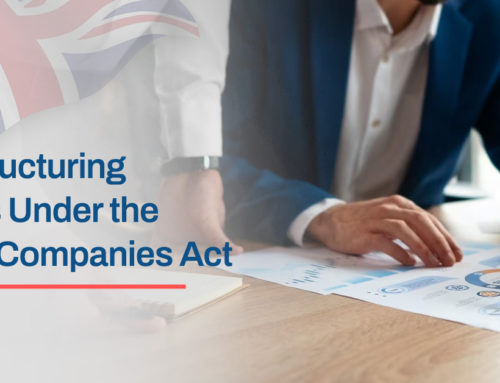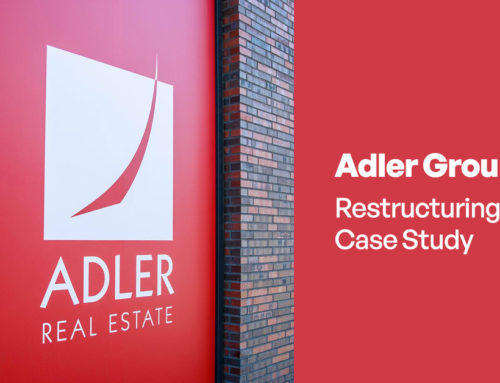Shareholders of a company receive annual dividends as a return on their investment. A company pays the dividends from their trading profit, known as their retained earnings, after Corporation Tax has been deducted.
What are liquidating dividends?
Dividends are a share of a company’s profits that is paid to shareholders, usually annually, based on the number of shares held by each individual shareholder. The value of a share is based on its market value, i.e. how much each share is worth according to the financial markets. So, for example, if the market values each share at £3 and a shareholder holds 1,000 shares, they will receive a dividend of £3,000.
These are known as regular dividends and are paid from the company’s retained earnings, i.e. the profit made in that year of operation. However, if a solvent company is being liquidated, shareholders will receive what are known as liquidated dividends.
These dividends are a combination of the company’s retained earnings whilst it was trading, and an amount from its capital base, i.e. the shareholders’ original investment. So, the shareholder will receive their original investment back and a share of the company’s liquidated profits. For example:
If a company has retained earnings of £200,000 and a capital balance of £1 million, and there are a total of 200,000 shares valued at £3 per share, the total dividend is:
£3 x 200,000 shares = £600,000.
Therefore, the company uses its £200,000 retained earnings first and the balance of the dividend will be paid from the company’s capital base of £1 million, which will be £400,000. For a shareholder, their total dividend equates as:
200,000 shares / £200,000 retained earnings = £1 per share
£3 total dividend – £1 regular dividend = £2 per share
So, a shareholder that holds 1,000 shares will receive a total dividend of £3,000 which is broken down to:
£1,000 regular dividend (£1 x 1,000 shares)
£2,000 liquidating dividend (£2 x 1,000 shares)
The liquidating dividend represents the return on the shareholders’ original investment and generally, this proportion of their total dividend is not taxed.
When are liquidating dividends paid?
Liquidated dividends are paid when a solvent company is closed down, i.e. liquidated, through a members’ voluntary liquidation process (MVL).
An MVL can only be used by a solvent company that wants to cease trading. There are a number of reasons why a solvent company wants to liquidate:
- The owner/directors of the company want to retire
- There is no-one to take over the company should the owners/directors wish to retire
- The purpose of the company no longer exists
- A contractor wishes to wind up the company to take on a full-time role elsewhere
- The company is being restructured or the structure is being simplified under Section 110 of the Insolvency Act 1986
- The company is being divided or it’s a demerger and assets need to be transferred. This is known as a ‘restructuring members’ voluntary liquidation’.
With a members’ voluntary liquidation in the UK, the company must not only be able to pay all their creditors in full within 12 months of the process being completed, they must also be able to pay all future liabilities, such as HMRC in terms of corporate tax and VAT, the closing of company accounts, any lease and finance arrangements, and any PAYE/NIC obligations.
Part of the appointed liquidator’s role is to distribute the company’s assets, i.e. in specie, and remaining monies once all the creditors have been paid, among the shareholders. The company’s shareholders will receive their regular dividend, which is subject to tax, as well as a liquidating dividend, which is their return on their investment and generally, is not taxed.
For most solvent companies that are closing down, if the majority of the shareholders are individuals and the distributable assets are worth more than £25,000, an MVL is the best process.
Tax implications on dividends
When a company goes through the MVL process, because its distributable assets are paid as a capital distribution, they will incur capital gains tax rather than income tax. Therefore, it is subject to a rate of tax that is different from your income tax band. In addition, shareholders may also be able to claim Business Asset Debt Relief (BADR), formerly known as Entrepreneurs Relief, which will reduce the amount of tax payable on the capital distribution. However, the shareholder will need to have held more than 5% of voting rights in the company at the time of the liquidation.
Whilst the tax benefits are favourable when a solvent company is liquidating, HMRC keep a close eye on how tax is claimed. In order to prevent people from using an MVL as a way to avoid paying tax due, HMRC implemented new changes in April 2016 which means that shareholders claiming BADR and tax relief on the capital gains of liquidated capital distribution will need to prove that:
- They are eligible for Business Asset Debt Relief;
- The main intention for winding up the company was not to gain a tax advantage;
- The shareholder is not involved in a similar business within 2 years of the previous solvent company being liquidated.
HMRC’s Targeted Anti-Avoidance Rules (TAAR) was introduced to ensure that shareholders do not abuse the tax advantages when winding up a solvent company. Known as the Anti-Phoenix rules – Phoenix is when directors and/or shareholders close one company and subsequently open another similar company, or one with the same purpose, i.e. a new company rises from the ashes of another – HMRC will re-classify a shareholders capital distribution as an income distribution if they believe that tax avoidance is the case, which will result in dividend tax rates of up to 38%.
If you are considering winding up a solvent company that is no longer needed or the directors wish to retire, or you are a shareholder looking for advice on liquidating dividends, the first step is to seek professional advice. Our highly experienced professionals at Leading UK are on hand to help on any of these issues.






